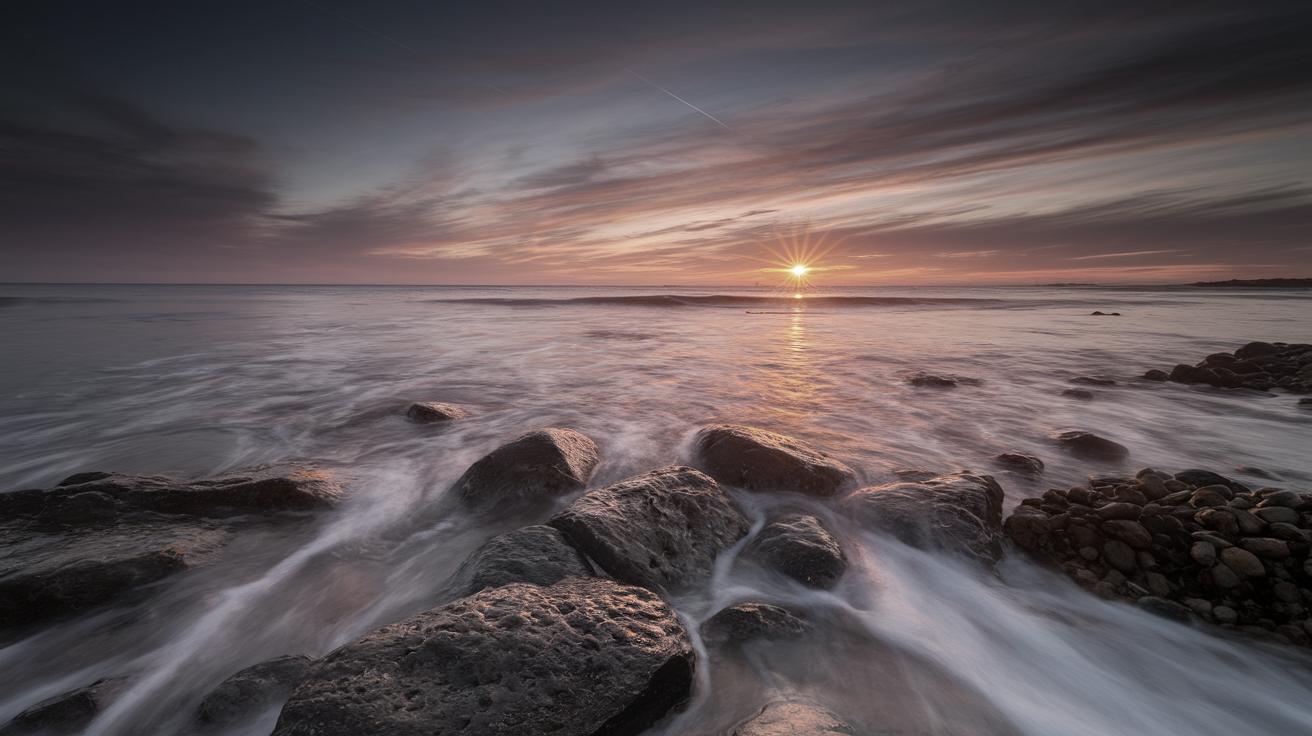Principles of Fine Art Photography
Fine art photography is the fusion of technical mastery and emotional depth, resulting in images that transcend their medium to evoke powerful emotions and thought. The intrinsic principles of fine art photography, such as creatively reading the light, mastering both visible and invisible light, and achieving freedom of expression, are integral to creating art that is personally fulfilling and universally compelling. This article explores these principles, offering insights into their application and significance in the realm of artistic photography. For aspiring fine art photographers, understanding these elements is essential for cultivating a distinctive and impactful body of work.
FOREWORD
Fine art photography is not only an artistic endeavor but also a personal journey of self-expression and discovery. As photographers, the pursuit of creating something unique requires us to reflect on our artistic voice and explore different approaches to our craft. This article will guide you through the fundamental principles that define fine art photography, helping you to navigate the creative process with both heart and mind.
While the principles outlined here are by no means exhaustive, they serve as a foundation for artists looking to develop their own style and voice. Understanding these principles allows photographers to transcend the technicalities of photography and focus on what makes their work personally meaningful and engaging for others. It is this balance between technical skill and personal vision that lies at the heart of fine art photography.
THE HEART AND THE MIND OF THE CREATIVE PROCESS
In the creative process, both the imaginative and the rational components play an essential role. They can be thought of as the heart and the mind of creation—one drawing from a wellspring of creativity, and the other grounding it in solid principles. Fine art photography requires both elements. The heart fuels the emotional and intuitive drive, pushing boundaries and exploring new ideas.
Conversely, the mind governs the techniques and rules that give form and structure to those impulses. To create work that resonates emotionally and visually, photographers must harmonize creativity with technical expertise. By cultivating a dynamic interplay between these elements, photographers can create images that not only captivate visually but also touch the viewer emotionally.
THE MAIN FINE ART PHOTOGRAPHY PRINCIPLES
Below are the main principles of fine art photography, each contributing uniquely to the creation of artistic and photographically sound work. Understanding these pillars will enable photographers to craft images that offer both visual beauty and depth.
These principles are guides along the creative journey, aiding photographers in making informed decisions that align with their artistic vision. Each principle, explored in detail, will address the various aspects of fine art photography, emphasizing the importance of both individuality and technique in the art-making process.
1/ CREATIVELY READING THE LIGHT
Light is the essence of photography and understanding how to creatively interpret it is vital in fine art photography. The way light interacts with subjects and environments can dramatically alter the mood and impact of a photo. Training oneself to observe the nuances of light and shadow can transform a simple scene into a masterpiece.
In fine art photography, creatively reading the light involves more than just recognizing brightness or direction; it’s about understanding the character of light and its role in storytelling. By experimenting with different qualities of light, photographers can evoke emotions, texture, and depth, making their work resonate on a deeper level.
2/ MASTERING BOTH THE “VISIBLE” AND THE “INVISIBLE” LIGHT
The fine art photographer works not only with the visible light captured by the camera but also with the concept of “invisible light”—the light created during post-processing. This added layer of creativity allows for the enhancement and transformation of images beyond what is straightforwardly captured.
Invisible light is about making choices in editing that complement the vision established during the shoot. Mastery over both kinds of light empowers photographers to infuse their work with personal expression, often revealing hidden textures and emphasizing elements that might otherwise remain unnoticed. Success in this area distinguishes the technician from the artist.
3/ FREEDOM OF EXPRESSION AND ARTISTIC HAPPINESS
Artistic freedom is the cornerstone of creativity. In fine art photography, this freedom allows the artist to explore, innovate, and express personal vision without constraints. The joy derived from this freedom is what many refer to as artistic happiness—a state in which the artist feels fulfilled and inspired.
In embracing artistic freedom, photographers are encouraged to break away from conventional norms and trust their instincts. By valuing personal satisfaction and growth ahead of critical acclaim, artists tend to produce work that is genuine and resonates on a deeper level with its audience. Artistic happiness emerges from the alignment of one’s inner vision with outer practice.
4/ CREATIVE COMPOSITION
The composition of an image speaks volumes about its intention and emotional impact. Creative composition goes beyond the traditional rules and encourages photographers to think outside the box, crafting visual narratives that captivate and engage.
This principle involves playing with elements like perspective, lines, patterns, and framing to create compelling images. Successful composition requires an understanding of both harmony and tension—balancing elements to draw the viewer’s eye and convey the desired message, thus transforming a photograph into a work of art.
5/ FOCUSING ON PROJECTS TO ALLOW FOR PERSONAL EXPRESSION
Working on cohesive projects as opposed to individual images allows photographers to explore themes in-depth and develop a personal language. This concentrated focus enhances the ability to delve into subjects with sensitivity and insight.
Projects also offer a framework within which to experiment with style, technique, and emotion. They drive artists to explore recurring motifs and deepen their exploration of a subject, evolving naturally over time into a comprehensive and compelling artistic statement.
6/ QUALITY NOT QUANTITY
In a world that often values production and output, fine art photography emphasizes quality over quantity. The saying “less is more” captures the essence of this principle, advocating for words and images that carry weight and substance.
Photographers are encouraged to focus on creating fewer pieces with more intentionality and care. This approach fosters a greater connection with the work, encouraging a meticulous examination of each element and support of artistic integrity and excellence.
7/ MASTERING BOTH THEORY AND TECHNIQUE
An understanding of photographic theory provides the foundation for any fine art photographer. Knowing principles such as balance, contrast, and harmony in an image can greatly influence its outcome.
However, mastering the technical aspects, including camera settings, lighting equipment, and editing software, is equally vital. This dual mastery ensures that the artist can faithfully translate their artistic vision into reality, marrying concept with execution.
8/ ARTISTIC VOICE AND PERSONAL APPROACH IN CHOOSING THE SUBJECT
Choosing a subject is an intimate act of introspection and creative expression. It’s an opportunity for fine art photographers to communicate personal narratives, evoke emotions, and engage with cultural or existential themes.
Edward Weston – Pepper No. 30
Edward Weston’s “Pepper No. 30” is a prime example of a subject transformed by an artist’s unique perspective, revealing a new world within the commonplace object.
Alfred Stieglitz – Equivalents Series Examples
Similarly, Alfred Stieglitz’s “Equivalents” series demonstrates an emotional and symbolic exploration of abstract concepts using clouds—a testament to the power of personal approach in subject choice.
9/ MEANING AND EMOTION
Art, at its core, seeks to express ideas and emotions that are profound and poignant. Without meaning or emotion, images remain flat and unengaging. Fine art photography should strive to touch its audience, leaving lasting impressions.
The cultivation of meaning in images involves intentionality in every aspect—from initial conception to final presentation. Emotion is conveyed through mood, tone, aesthetics, and underlying narratives woven into the visual imagery, steering the audience towards reflection and emotional engagement.
10/ FINDING YOUR PERSONAL FINE ART LANGUAGE
Developing a personal language in photography is akin to authors finding their unique voice. It requires dedication and introspection—learning to articulate individual perspectives and style.
This process is about drawing from personal experiences, preferences, and philosophies, crafting work that is both authentic and original. As artists hone their voice, they form a signature style that can be identified across works, strengthening both their identity and influence in the art world.
FINAL THOUGHTS
| Principle | Key Insights |
|---|---|
| Creative Light Reading | Understanding and using light creatively enhances storytelling. |
| Visible and Invisible Light | Mastery over both camera-captured and post-processed light adds depth to artistry. |
| Freedom and Happiness | Artistic freedom is essential for genuine expression and fulfillment. |
| Creative Composition | Innovative use of composition creates engaging visual narratives. |
| Project Focus | In-depth projects allow for deeper personal expression and exploration. |
| Quality over Quantity | Emphasizing quality ensures meaningful and impactful work. |
| Theory and Technique | Mastery in both areas empowers an artist’s creative execution. |
| Artistic Voice | Developing a personal style is crucial for artistic identity. |
| Meaning and Emotion | Art should evoke emotions and convey powerful messages. |
FURTHER STUDY RESOURCES
FINE ART BLACK AND WHITE PHOTOGRAPHY, ARCHITECTURAL PHOTOGRAPHY, LONG EXPOSURE PHOTOGRAPHY
To delve deeper into these topics, numerous resources and courses are available that can offer valuable insights into fine art photography across various disciplines.
To study with Julia Anna Gospodarou personally, find out about our
There are unique opportunities to learn from seasoned experts like Julia Anna Gospodarou, enhancing your understanding of fine art photography.
Support our mission for high quality photography education. Donate now!
Your contribution helps enrich learning materials and educational outreach in the art of photography.


